
9 minute read
Finland: Salmon Fishing under the Midnight Sun
I arrive at the salmon fishing lodge Naamisuvanto, located in Lapland, above the Arctic Circle, in Northwestern Finland. The smell of fresh coffee welcomes me as I step inside the lodge.
By SANNA KOLJONEN Pictures: SANNA KOLJONEN, HENRY SCHMIDT, JOONAS LINKOLA and ISAK SANDLING
I notice a group of fishermen gathered around the table, all of them are staring at something spread out on the table - presumably a map of a river, and a screen in the corner of the room showing a real-time graph of salmon ascending to the local river to spawn. I introduce myself to everyone in the room.
The situation is very familiar to me. Whenever I meet fishermen I feel like coming home, while the ones meeting me - a female fly-fisher, often seem to wonder whether I’ve come to the right place at all. A fishing guide from Naamisuvanto, Miska Haapsalo, joins us and we start discussing the first weeks of the season. The beginning of the summer has been rather cold, the water levels are high, and the salmon run is late.

I listen to Miska very carefully because it’s only my second salmon fishing season and my first time at the longest free-flowing salmon river in Europe - River Tornio or River Torne as they call it in Sweden. Not surprisingly, my aim is to catch a salmon on the fly. However, I’m not alone with my mission. With me, I have a Swedish fly-fishing virtuoso Emilie Björkman. We have come here to catch the Baltic dream and to make a short fly-fishing video for Travel Pello, a company that promotes tourism in the area. We have four days on us.

The story of the Baltic Salmon of River Tornio
When I was presented with the opportunity to fish River Tornio, I immediately said yes. Throughout my childhood, I had heard stories about the mighty 510-kilometer-long salmon river that flows on the border of Finland and Sweden and drains into the Baltic Sea.
The story of the Baltic salmon in River Tornio is special in many ways. Based on genetic differentiation, the Atlantic salmon stock in the Baltic Sea area can be divided into three phylogenetic lineages: southern, eastern and northern. The northern lineage - in other words the salmon stocks of the Gulf of Bothnia including River Tornio - arrived into the Baltic Sea during the Yoldia Sea stage around 10 000 years ago when the Baltic Sea was still connected to the Atlantic Ocean through the middle of Sweden and thus it was possible for the Atlantic salmon to spread from the West to the East.

Today, this northern lineage is the most viable of these three lineages and over one third of the 1-1.5 million salmon that feed in the Main Basin of the Baltic Sea are born in the mighty River Tornio. This makes the river nothing less than one of the most important spawning rivers of the wild Atlantic salmon in the world.
The history of the Baltic salmon in River Tornio also teaches us an important lesson: Viable salmon stocks should not be taken for granted. In the 1980s, commercial overfishing almost led to the extinction of the River Tornio salmon stock. Luckily, the countries that are home to the rivers, which the Baltic salmon stocks originate from, woke up to the situation before it was too late. After being on the brink of extinction, the fishing regulations were tightened up and the Baltic salmon stocks were saved.

Thanks to revised fishing policies and regular enhancement stocking, the salmon stocks of River Tornio have recovered well. The year 2014 was the best year since the downfall of the stock and that year over 100 000 spawners passed the fish counter at the Kattilakoski rapids, located further down River Tornio. Due to the good fishing conditions, the year 2016 was even better fishing wise.
In addition to the revived salmon stock, the river fishing culture has also taken huge steps forward and, for instance, the number of recreational fishermen has increased remarkably. The development that has taken place during the past 20 years in fishing tourism has even surprised the entrepreneur of Naamisuvanto, Petri Uusitalo, himself.

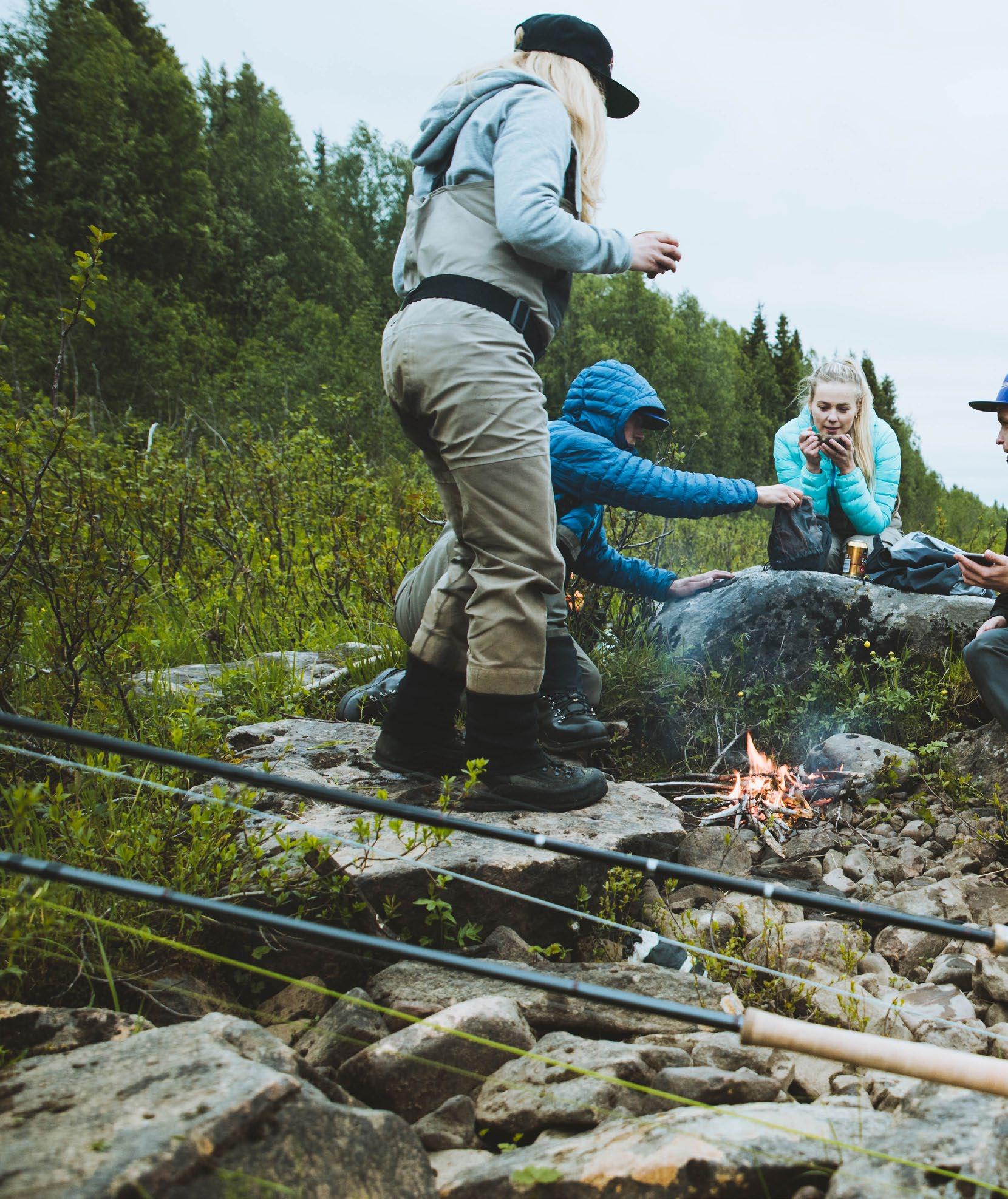
Salmon fishing madness
Emilie and I fish like maniacs for four days and sleep only a few hours each night. I thought I was done staying up all night, but the nights spent awake with my thesis during the spring are nothing compared to salmon fishing. The pools we fish look so promising that every now and then I forget to breathe because I’m sure that the salmon will grab my fly at any given moment. The story goes that Baltic salmon are strong - and I can’t wait to experience it myself.
The chance of hooking a big salmon keeps me focused despite my tired mind and I continue fishing with a smile on my face day after day even though my waders leak badly and I can’t recall when we last ate. By the river, it almost seems like salmon fishermen get all the energy they need from the very thought of catching a salmon and the looming midnight sun. My thoughts go in circles when I think about where the salmon is, why it won’t take, how I should present the fly, whether I should change to a heavier line, where the drag is - I wish I would see at least a glimpse of silver!
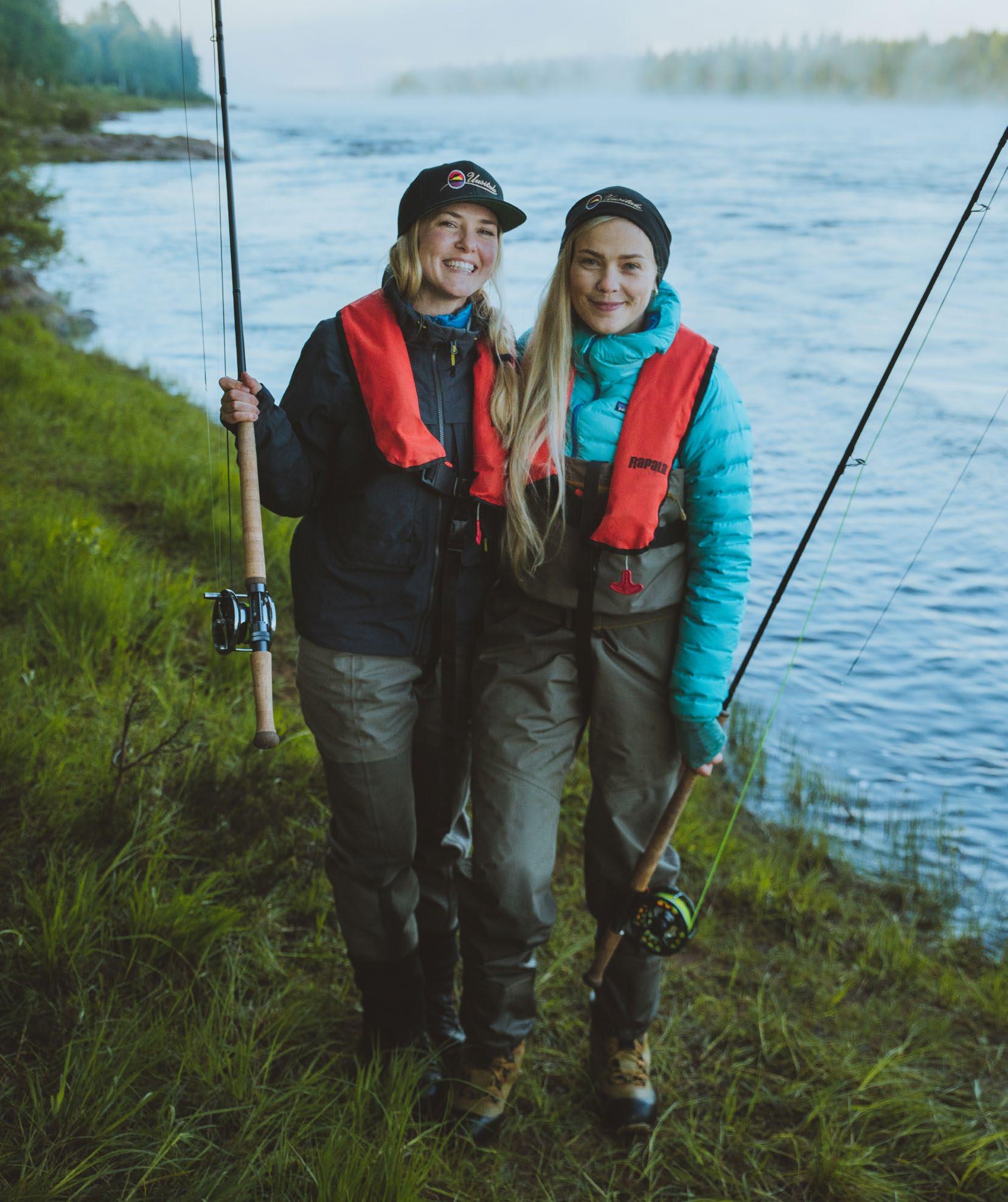
The realm of big salmon
I’ve fished for salmon in Sweden and Norway on previous occasions, but the River Tornio is beyond compare. I fall in love with its magnificent size, versatility and the challenge it entails. Due to its big size, there are countless of places to fish. Emilie and I fish many promising pools from the bank. In many places, the fishing resembles fishing in the Norwegian private pools because, apart from us, we don’t see many fishermen fishing from the bank and we get to open one beautiful pool after another.
It’s early season, the water is cold, and the current is strong, so we fish with heavier lines and big tube flies, which should help us to find the salmon. However, despite the breadth of the river, one doesn’t always have to cast that far to catch a salmon in River Tornio.

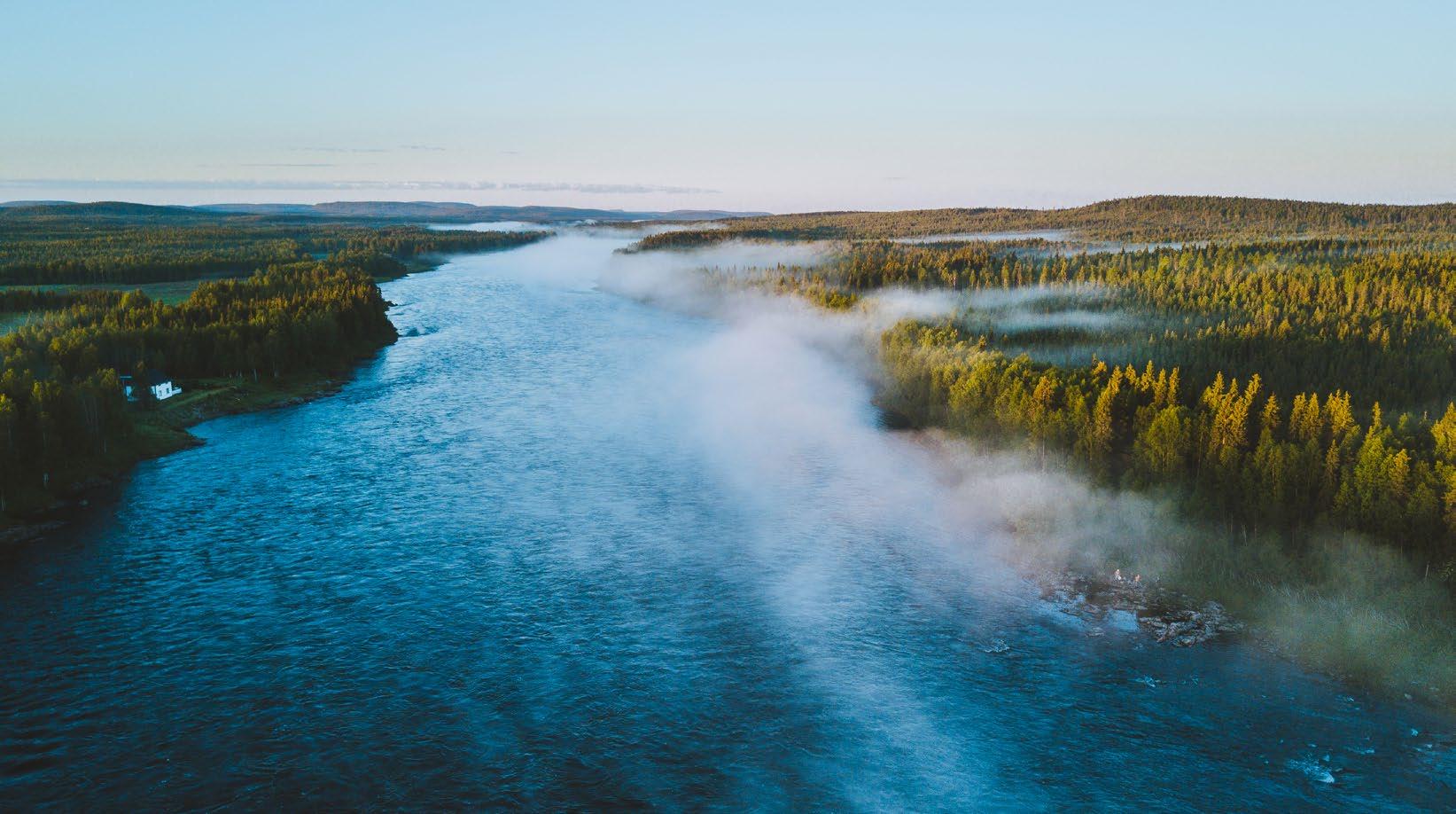
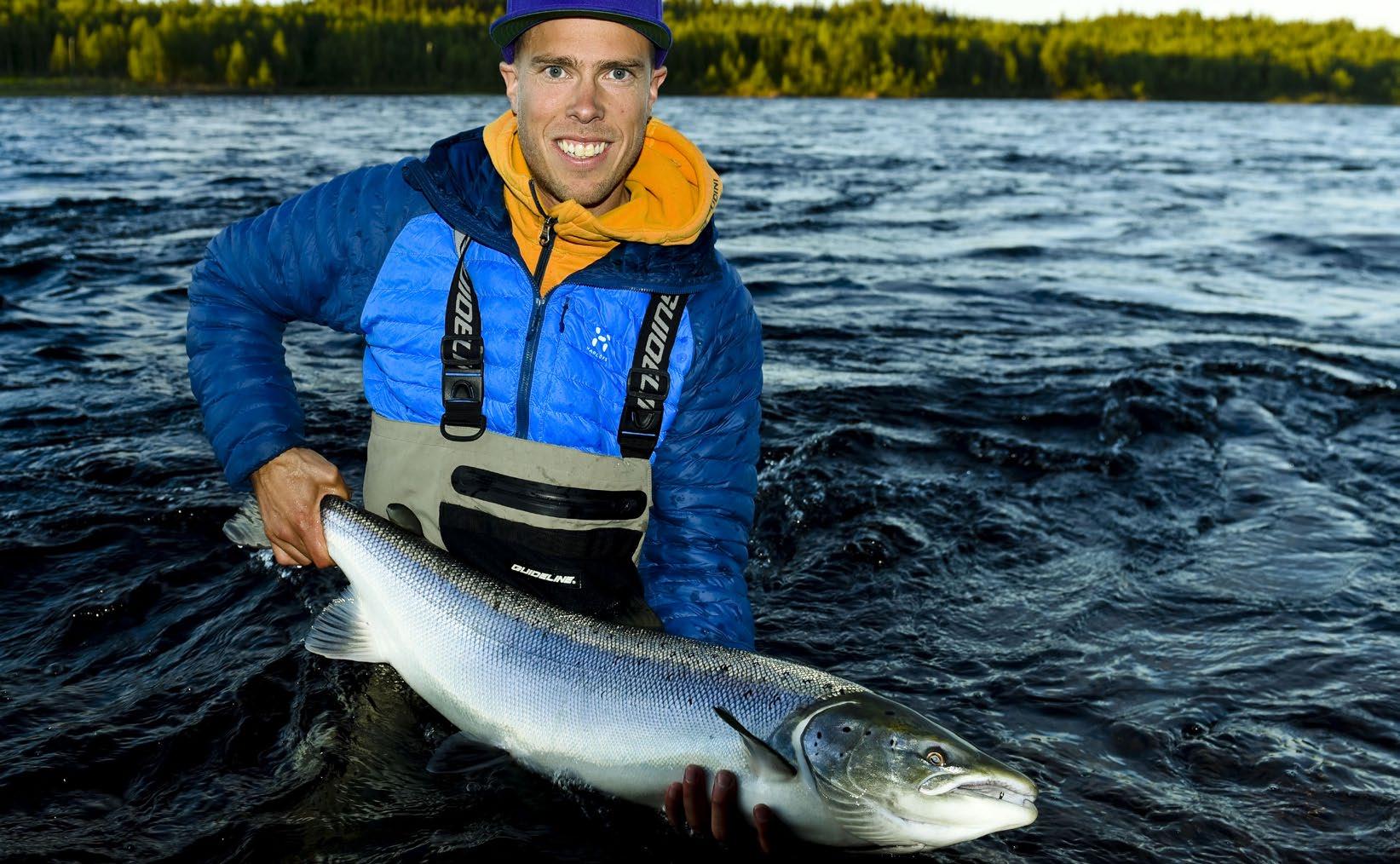
Especially in the beginning of the summer the salmon tend to come very close to the bank where the current is moderate and thus more favorable. Miska, who has guided in River Tornio for five years, explains to me that the customers that keep returning to the river year after year are most often hooked by the size of the fish: The average weight of salmon caught in River Tornio vary from 6 to 8 kilos and each year salmon over 20 kg are landed. I can identify myself with other salmon fishermen who crave a big silver salmon – it’s precisely the reason I’m here.

Casting from the boat
The main run is late, but it slowly begins the same week we’re there. The guides of Naamisuvanto barely sleep when the season is at its hottest and big salmon are guided for the customers day and night. Salmon fishermen from Finland, Sweden and from further abroad come to the River Tornio to quench their never-ending thirst for big salmon. For instance, a Swedish fly-fishing guide, Isak Sandling, guides two beautiful shiners to a French fly-fishing veteran during our stay. the guides take us to fish from the traditional long wooden boats.
At first, I feel very sceptic about the whole idea, but fishing from the boat in a nightless misty night turns out to be one of the most mesmerizing moments of my summer. In the boats we reach spots that are unreachable even for the most talented banked fly fisherman and Emilie manages to hook her first chromer. Moments later I hear cursing in Swedish and conclude that the fish has gotten away: The salmon has spit the fly.

The four days have now come to their end and we decide to continue fishing in the River Tornio later in the summer.
Return to the salmon mecca
I return to the river in the middle of August. The end of the season is drawing closer and the water temperatures have dropped to 13-14 degrees °C. Instead of the runners, this time I focus on finding salmons that have already been in the river for a while. After almost three weeks of fishing, my turn finally arrives. Nothing in the world feels as good as that steady, calm pull that leaves no room for doubt about what has just taken my Banana Fly.
The salmon is strong and fights hard and, even though I’m prepared to face the Queen of the Baltic Sea with 400 meters of backing, it doesn’t take long runs. When the dotted beauty lies in the net I’m shaking with excitement and happiness, and I feel like an Olympic champion: I have achieved my goal.
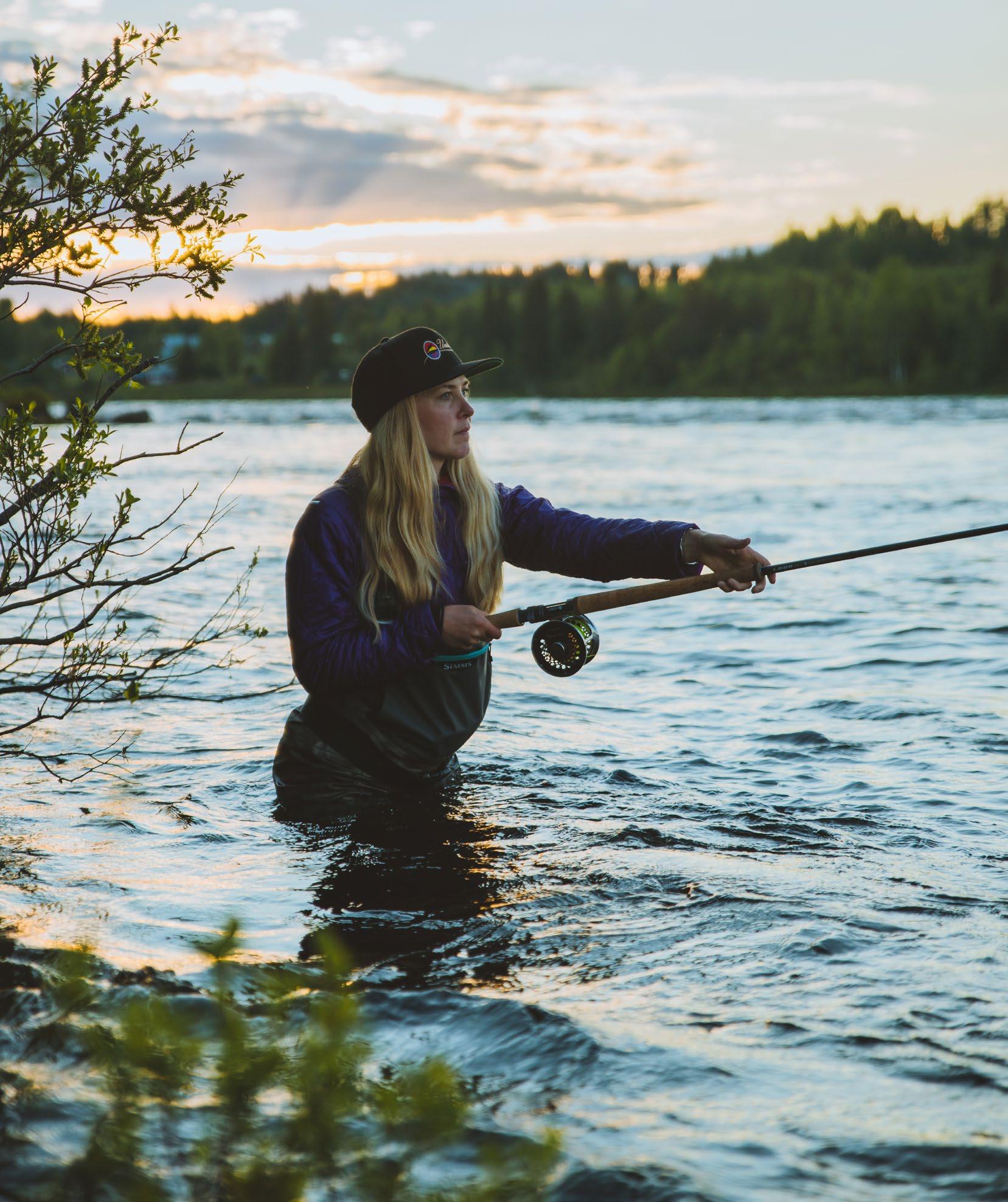
During the four day-trip that turned into three weeks, I learn that, to catch a Baltic salmon, you often need to step out of your comfort zone. However, it’s still the coolest thing you can do in fishing, and once you land your first, there’s no going back.
Although I didn’t plan to spend three weeks of my summer in River Tornio, the time spent in Naamisuvanto with likeminded, easy-going and down-to-earth salmon bums turned out to be the best weeks of the whole summer. By the end of the salmon season I’m fully convinced that although salmon fishing might not have been invented in River Tornio, it was certainly perfected there.








